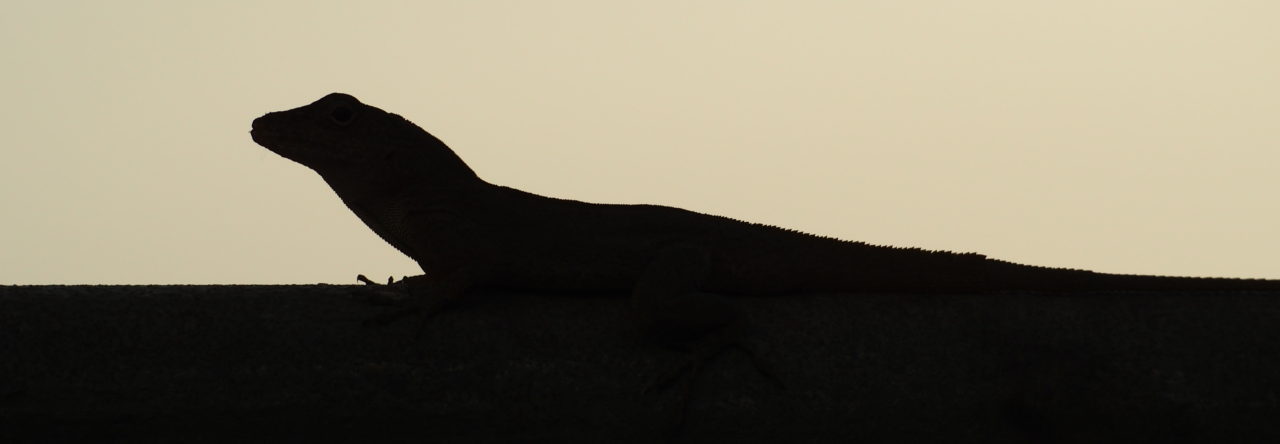
Read all about it in the Journal of Herpetology:

Abstract:
Pre-Pleistocene fossils of Anolis lizards from the mainland of the Americas are exceedingly rare: only two specimens referred to a single species have been described previously. Here we report on a third specimen, preserved (as are the other two) in Miocene amber from Chiapas, Mexico, and consisting primarily of the anterior vertebrae of the caudal sequence. Despite the fragmentary nature of the fossil, it preserves key osteological characters that permit confident referral to the Anolis clade and further suggest placement within the Dactyloa subclade in a clade of three extant species within the Anolis aequatorialis series. The Chiapan provenance of the fossil indicates that the geographic distribution of the Dactyloa clade (and possibly that of the A. aequatorialis series) extended considerably farther north during the Miocene. Although the new fossil represents a different part of the body than the two fossils representing the fossil species Anolis electrum, its inferred phylogenetic relationships are the same as one of the several possible phyloge
- Evolution in Real Time on Lizard Island - March 23, 2025
- Spider Snags Adult Anolis osa - March 22, 2025
- An Homage to the Green Anoles of New Orleans - March 21, 2025


Leave a Reply